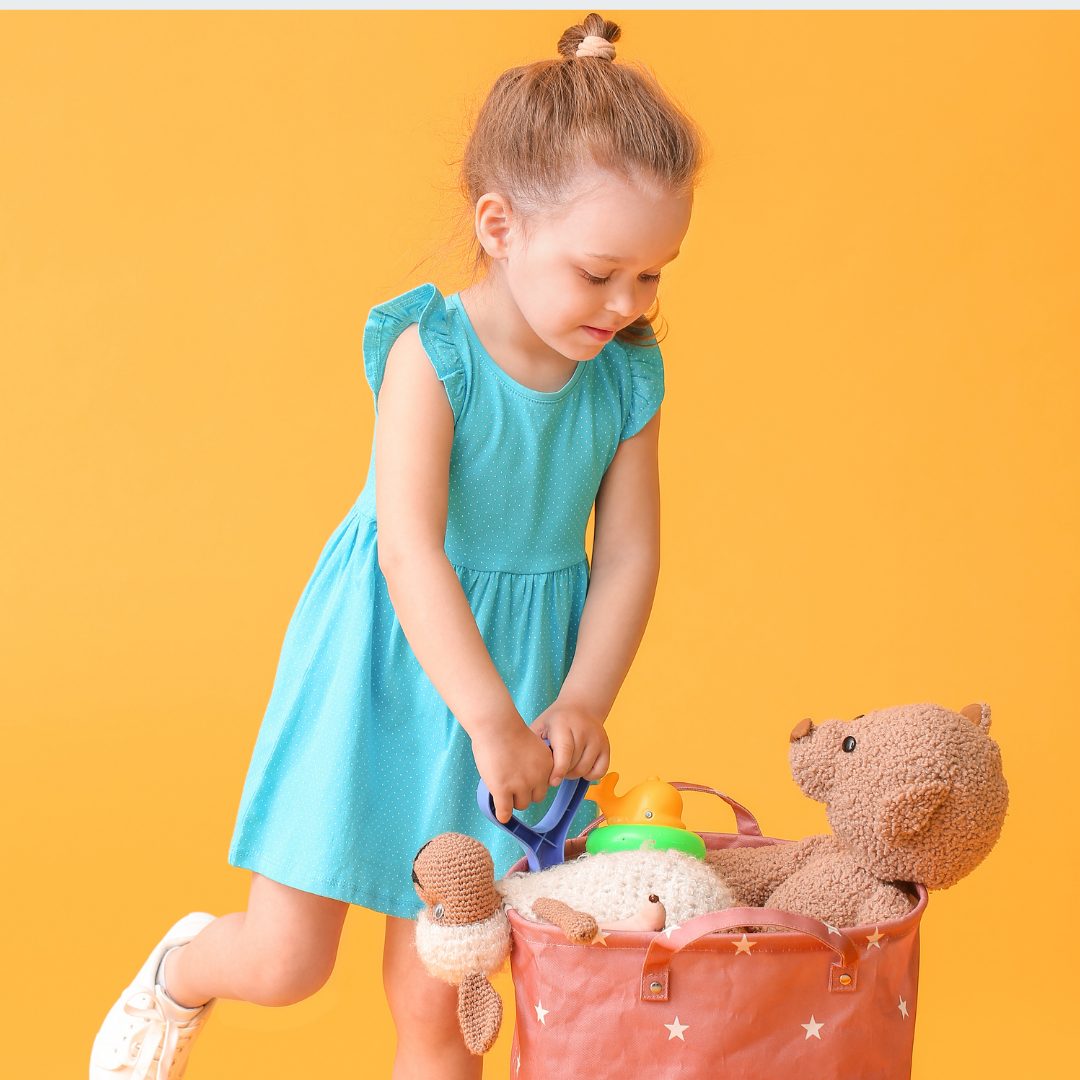
Best Toys Review for Speech Therapy
Introduction
Now, who does not love toys? Further, we all know toys are not just for fun. They can also be used to develop various skills in kids. For instance, cognitive, problem solving, social skills, speech, and language skills. We all want to go and buy the trending toys. But wait up. Don’t do that. As it will be used once and after that just catch dust in your home. Instead, review it. See how it can be useful in multiple ways. In this blog, I am going to review the best toys for speech therapy. This article is based on my practical experience. Hence, it can be used as a reference by both SLPs and parents.
What to look for when buying toys:
- Promoting imagination: Firstly, when buying toys for kids make sure they promote creativity. A single way use of toy will get them bored sooner. They will want a new toy again. Secondly, a toy that sparks creativity can be used in multiple ways. This will keep them engaged for a long time. And I am pretty sure this is all that parents want!
- Multiple usages: A one-time use and throw away the toy. This is not doing well for your kid or your pockets. Toys that can be used in different ways keep kids engaged for a long time. In case you are running out of ideas, these will be a time saver and no-brainer.
- No battery toys: Firstly, there is no talking while playing with battery-operated toys. Secondly, curiosity and learning stops. Moreover, most electronic toys, play with sounds like constant singing, and buzzing sounds. These sounds are harmful to children if heard continuously for a long time.
- Look for toys that grow with your child: Your kid will play for 2 days with a toy and then leave it. Instead, take up toys that can be fun at different ages. For example, animal models. These can be used to play or to make stories for elder kids.
- Toys helping exploration and problem solving: Toys that give kids a chance to figure something out on their own. Or with a little coaching. This builds their logical thinking skills. They become persistent problem-solvers.
Best toys review:
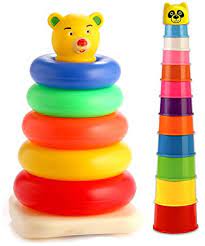
- Why: These are versatile and can engage kids for a long time. You can use it to target various skills such as social, problem-solving, language, and articulation skills. They spark the imagination as well.
- How: Classic – Stack them up and make towers. Break the towers and use them for reinforcement. Put objects inside the cup. Hide objects underneath the cups and have fun finding them. Talk about colors. Count them. Talk about adjectives. Use it to teach prepositions. Fill with sand and throw it out. Sound practice – say a word and put the cup. Turn-taking, problem-solving. The list is endless.

- Why: They are handy and come in all shapes and sizes. Again they promote a variety of skills. Language, problem-solving and social skills. Children can create anything they want. The sky is the limit!
- How: Work on following directions. Where to put and what to put. Work on verbs, adjectives, and prepositions. Work on speech sounds by having your child say a word before getting a block. Narration skills, what and how you are creating it. Problem-solving skills are used to plan and execute a tower that won’t fall.
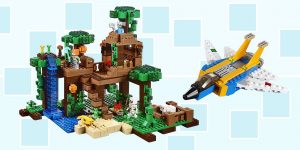
- Why: Construction toys are the best. It creates imagination. (Making robots, dinosaurs, cities, etc. ) You can work on teamwork. It also helps in managing frustration, when the build breaks or is not like what the kid planned. Perseverance, to keep building until you reach perfection. It lowers stress and anxiety. Patience, focus, and concentration are more skills targeted by Lego.
- How: Expand the utterance. Build vocabulary. Odd one out. Following directions. Practicing sounds by the number on 1 Lego piece. Conversation skills.
- Link: You can buy it from the Lego store’s official website or amazon.
Some More Toys:
- Why: These are translucent tiles with magnets around them. I just love to play with them! The imaginative play is endless. There are so many possibilities of things to build. This makes them more interesting than regular toys.
- How: You can target spatial concepts. (top, bottom, right, and left) Shapes, colors, and size. 3-D creations such as cubes and pyramids. They can be used for cooperative play and independent play. Using descriptors in a sentence. Example – Can you give me a green piece? Articulation trails can also be done. Problem-solving is also targeted.
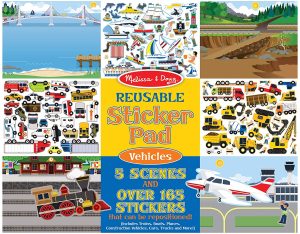
- Why: These are stickers of different objects which you can paste. There are different scenarios such as construction sites, beaches, etc. You cannot imagine the number of skills you can target from these. You can use these with older kids as well.
- How: You can target various social skills such as topic initiation on the scenario and maintenance. Narration and imagination skills. Fine motor skills. Picture to shadow matching (cognition). Language skills such as making sentences, naming, etc. Answering what, where, and why questions. Roleplay.
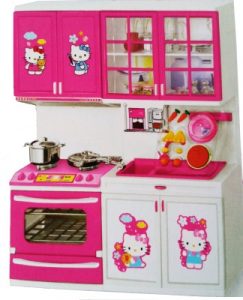
- Why: If you do not have time to think about your sessions. On a hectic day. These should be your go-to toys. These are great for no-prep sessions. Hours of imagination and role play can be done. Targeting multiple skills.
- How to target language skills are no brainer. You will learn descriptive words for instance smells, feels (hot/cold). Memory and complex pretend to play such building zoo, picnic menu for friends.
Completing the list of toys:
7. Animal, fruit, and vehicle set
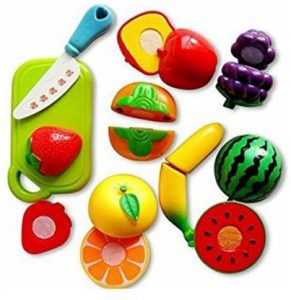

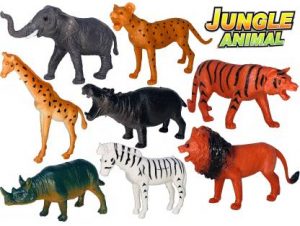
- Why: Almost all kids love cars, trucks, cutting fruits, and animals. They are an active game. Unprepared for your sessions just use these.
- How to use it: There are so many things you can do with it. I am going to list a few. Articulation drills, sequencing skills, categories, memory, etc.
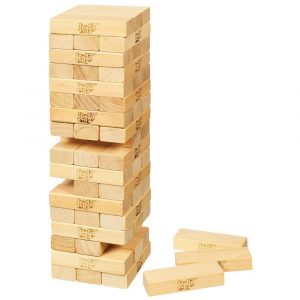
- Why: Now this is a great toy for older kids in addition to this younger kids can use it like blocks.
- How: Classic playing Jenga game, targeting analytical thinking and fine motor skills. Make other creations out of it as you did with blocks. In this, it looks more realistic. Articulation drills can be done.

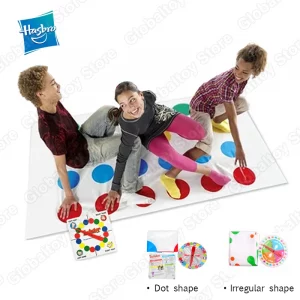
- Why: Now this is fun for older and younger kids. Even you will feel like playing with them.
- How: You can play twister and target fine and gross motor skills. Moreover, you can target lots of social skills for instance turn-taking, cooperation, teamwork, winning, and losing. Get any number of trails by jumping on colors. Giving directions to each other.
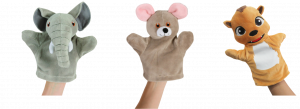
- Why: Puppets are my go-to toys for unprepared sessions. Puppets have power over kids. They can make them do things that we cannot.
- How: Target different intonation patterns, social stories that can be enacted for autistic kids, role play. Language skills in terms of kids can ask puppets to do things and follow directions.
Lastly:

- Why: This looks very silly! Kids love him.
- How: You can teach emotions, speech and drama skills, body parts through this. Target making imaginary stories.
- Sensory bin

- Why: These are very engaging. Every time I bought this in my session, my kids’ faces just lit up. These are great with autistic kids as well.
- How: Hide things inside the bin and target use of objects, vocabulary. Articulation drills. Expanding sentences.
- Link: you can make these at home, using everyday things such as rice, shaving foam, pasta, etc.
- Bubbles

- Why: These do not require any explanation. Bubbles are next to magic for kids. They grab kids’ attention. They are great motivators as well.
- How: practice turn-taking, articulation drills, 2 words phrases. The list is endless.
- Link: You do not need a link for this!
Here are some other articles which you can go through for making your sessions more fun and interesting.
View this post on Instagram
- Will Selective Mutism go away? - March 31, 2023
- Right hemisphere damage and speech skills - February 14, 2023
- All about thumb sucking and non-nutritive oral habits - February 10, 2023


Leave a Comment
(0 Comments)